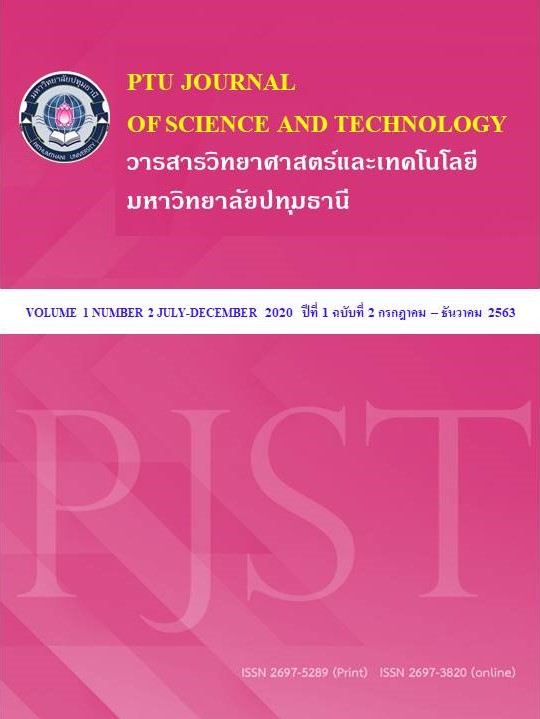การออกแบบเชิงตัวเลขของเตาเผาทรงกระบอกสำหรับการใช้งานกังหันแก๊สขนาดเล็ก
Main Article Content
บทคัดย่อ
Nowadays, electrical energy is important in daily life and industry. The micro gas turbine is one type of technology used in generating power, with a small scale and reliably distributed power system. Advantages of the micro gas turbine are that it is cost effective, reliable and low maintenance. Fuels for producing electrical energy via the micro gas turbine are the subject of this study because the combustion efficiency of the optimal cylindrical combustor will change as it is used with different fuels. Therefore, the re-designed configuration of the combustor is necessary for improving the efficiency of the micro gas turbine. A computational design is implemented because of the accuracy in calculation and ease of modelling. This research mainly focuses on the efficiency of the combustor in the micro gas turbine system as the main fuel supplied is changed from LPG to natural gas (methane). The geometry of the cylindrical combustor was constructed by SolidWorks and then numerically solved by Fluent. The cylindrical combustor has a 50 mm flame holder, 600 mm chamber height, and four holes of 6, 8, 10 mm for the dead zone, combustion zone and dilution zone, respectively. Different fuels were used in simulations with a non-premix combustion model, consisting of the standard k-e model for turbulent flow, energy equation, continuity equation and P-1 radiation model. All of the equations were solved by a finite volume method. The results were validated with the experimental data of (Enagi et al., 2017) and show that both cases provide similar temperature contours. The average temperatures at the outlet of LPG and methane fuels were 1318 K and 1312 K, respectively. In contrast, the mass fraction distributions of the product gases, i.e. H2O and CO2, in both cases were different. This resulted in different efficiencies of combustion, in which the combustor with methane was shown to provide higher combustion efficiency.
Article Details
ความคิดเห็นและข้อเสนอแนะใดๆ ที่นำเสนอในบทความเป็นของผู้เขียนแต่เพียงผู้เดียว โดยบรรณาธิการ กองบรรณาธิการ และคณะกรรมการวารสารวิทยาศาสตร์และเทคโนโลยี มหาวิทยาลัยปทุมธานี ไม่ได้มีส่วนเกี่ยวข้องแต่อย่างใด มหาวิทยาลัย บรรณาธิการ และกองบรรณาธิการจะไม่รับผิดชอบต่อข้อผิดพลาดหรือผลที่เกิดจากการใช้ข้อมูลที่ปรากฏในวารสารฉบับนี้
เอกสารอ้างอิง
Eng.22, 2003-2014
[2]. Enagi, Al-attab KA, Zainal ZA. Combustion chamber design and performance for micro gas. 2017 Fuel Processing Tech. 166 258-268
[3]. Al-attab KA, Zainal ZA. Performance of a biomass fueled two-stage micro gas turbine (MGT) system with hot air production heat recovery unit. Appl. Thermal Eng. 2014 70(1) 61-70
[4]. K.Y.Ahn, H.S. Kim V.I. Antonovsky. Model and field testing of heavy duty gas turbine
Combustor. 2001 KSME Int..J. 15 1319-1327
[5]. R.D.Shah, J.Banerjee. Thermal and emission characteristics of a CAN combustor. 2016 Heat mass
Transfer. 52 499-509
[6]. C.Ghenai Combustion of syngas fuel in gas turbine can combustor. 2010 Adv. in Mech Eng. 2010
1-13


